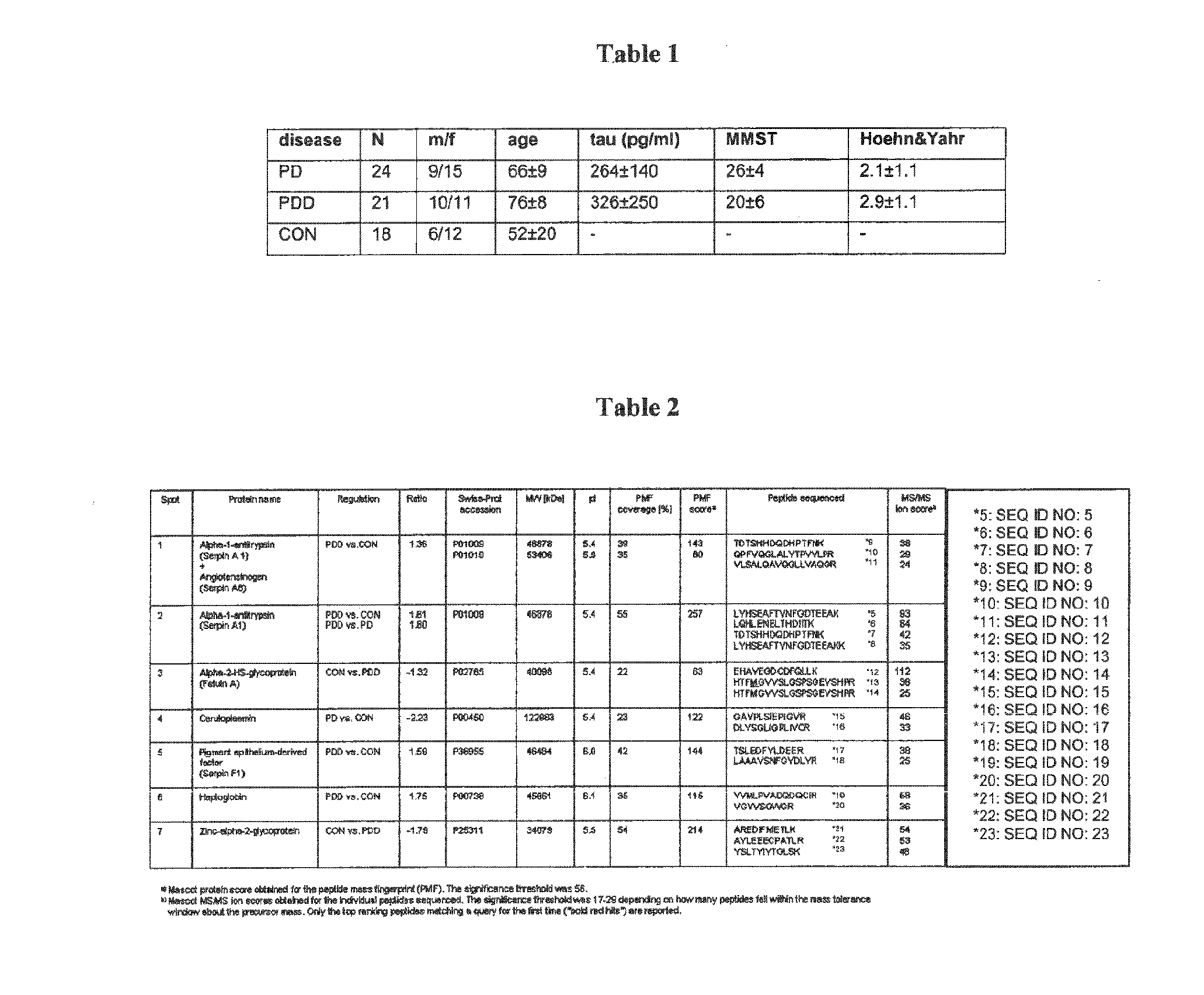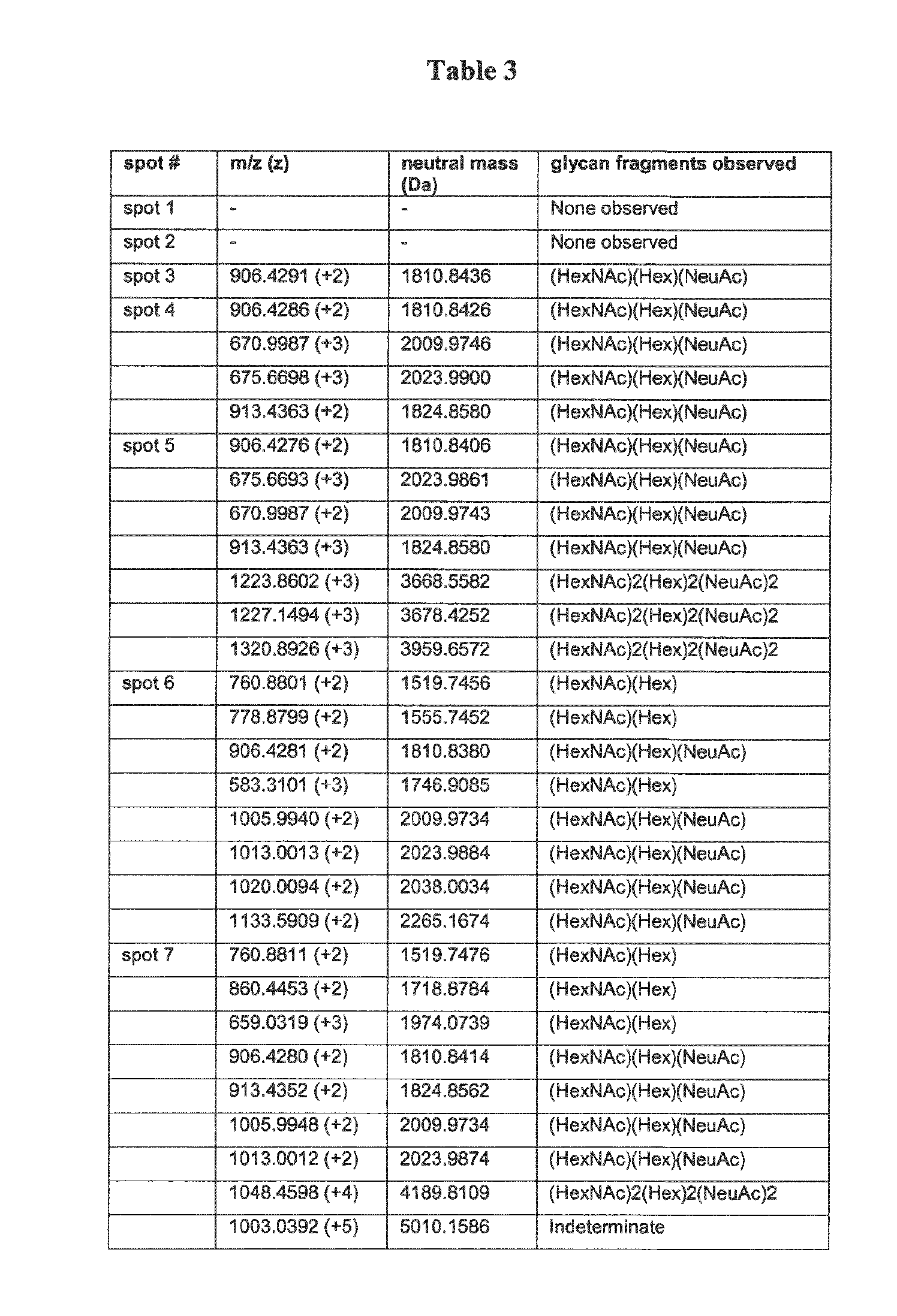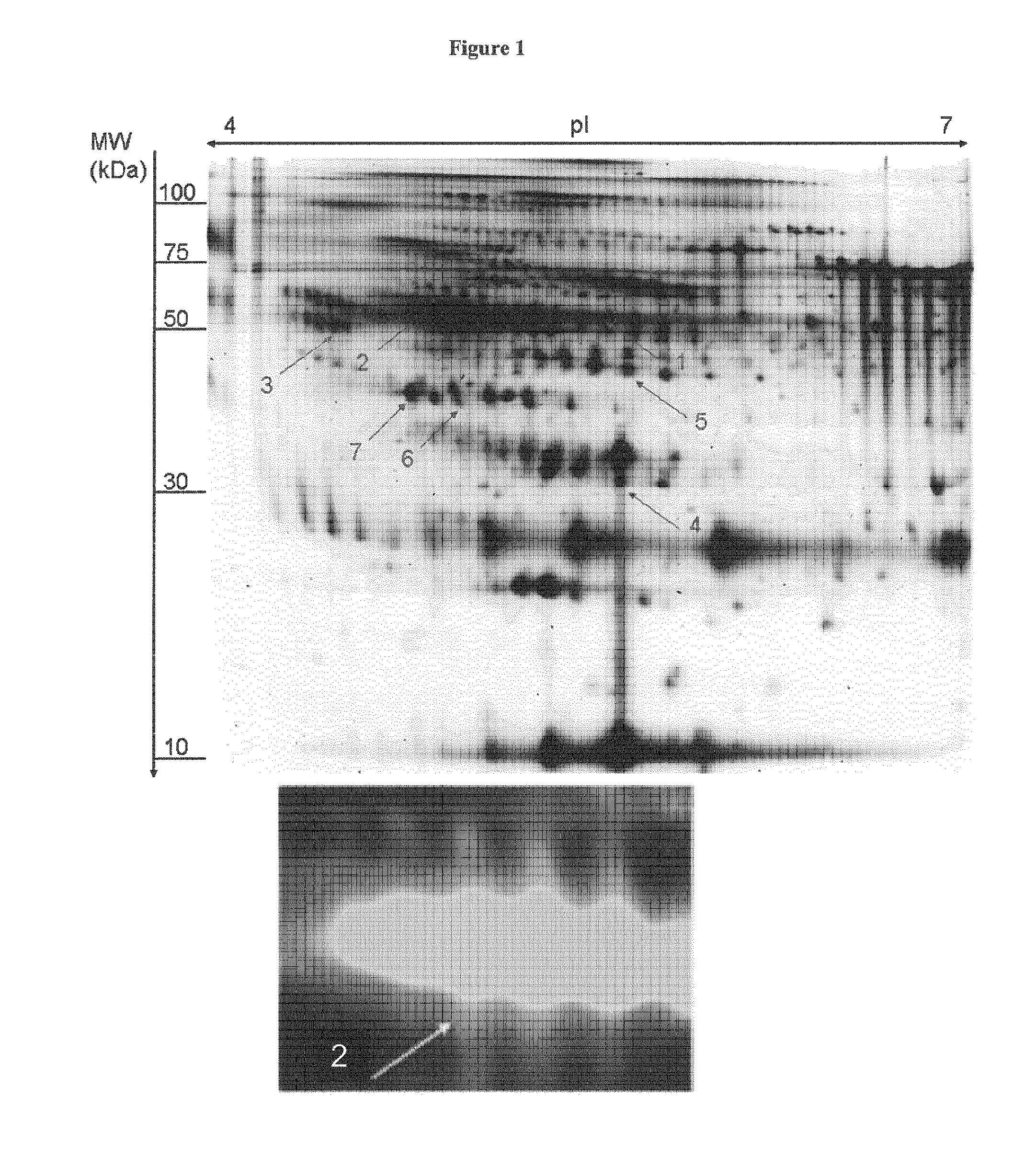Diagnosis and/or Prognosis of Parkinson's Disease Dementia
a parkinson's disease and dementia technology, applied in the field of parkinson's disease diagnosis and/or prognosis, can solve the problems of limited use of the neurochemical profile, and achieve the effect of increasing the sialic acid level of said protein
- Summary
- Abstract
- Description
- Claims
- Application Information
AI Technical Summary
Benefits of technology
Problems solved by technology
Method used
Image
Examples
example 1
PDD Patients can be Identified on the Basis of Glycosylated Isoforms Such as Serpin A1 Isoforms
Methods
Subjects
[0249]All CSF samples used for the proteomic approach were taken from patients attending the general outpatient clinic (University of Ulm, Department of Neurology) in 2006 and 2007. CSF was stored at −80° C. after analysis of the routine parameters cell count, lactate, Q-albumin and total protein until further analysis. For the validation study, additional samples to the CSF-patients were obtained in blinded manner from two different centres: Department of Neurology, Kuopio, Finland (9 PD, 7 PDD) and Department of Neurology, Perugia, Italy (8 PD, 8 PDD). Collection and analysis of CSF samples was approved by the Ethics Committees and conformed to the requirements of the declaration of Helsinki in 1964. Particularly, the local ethics committees (Ethik-Kommission der Medizinischen Fakultät der Universitäten Ulm und Göttingen, approval numbers: 8801 and 100305 and the regional ...
example 2
Analysis of Posttranslational Modifications of the Serpin A1 Isoforms
Methods
[0269]Characterization of Serpin A1 isoforms LC-MS / MS
[0270]Samples were subjected to proteolytic digestion on a ProGest (Genomic Solutions) workstation as follows: Samples were reduced with DTT at 60° C. and then allowed to cool to room temperature. Furthermore, samples were alkylated with iodoacetamide and subsequently incubated at 37° C. for 4 h in the presence of trypsin. Formic acid was added to stop the reaction and the supernatant was analyzed directly.
[0271]The samples were analyzed by nano LC / MS / MS on a ThermoFisher LTQ Orbitrap XL. 30 μl of hydrolysate was loaded onto a 5 mm×75 μm ID C12 (Jupiter Proteo, Phenomenex) vented column at a flow-rate of 10 μl / min. Gradient elution was over a 15 cm×75 μm ID C12 column at 300 nl / min. A 30 min gradient was employed. The mass spectrometer was operated in data-dependent mode and the six most abundant ions were selected for MS / MS. The Orbitrap MS scan was perfo...
example 3
Source of Additional Serpin A1 is the Brain
Methods
[0281]Methods were carried out as described in Examples 1 and 2.
Results
[0282]To investigate whether Serpin A1 in CSF is indeed brain derived, its expression in human cortex tissues was analyzed. 1D- and 2D-Westernimmunoblot analysis revealed Serpin A1 expression in brain material from both CON persons and patients with Lewy-body-dementia (DLB) which represent a pathologic pendant for Parkinson's dementia (PDD) (FIG. 4A). However, the additional isoforms of Serpin A1 were not restricted to patients with DLB and can also be identified in control patients (CON) (see FIG. 4B).
[0283]To investigate if the additional Serpin A1 spots were a direct result of cell destruction in the brain, tau-values above 450 pg / ml and the number of Serpin A1 spots>5 / 5.5 (ROC-analysis) were correlated by performing Spearman-rank correlations. No (significant) correlation was found in the various subgroups (PD: r=−0.102, p=0.663; PDD: r=0.428, p=0.0584), so th...
PUM
| Property | Measurement | Unit |
|---|---|---|
| Mass | aaaaa | aaaaa |
| Mass | aaaaa | aaaaa |
| Mass | aaaaa | aaaaa |
Abstract
Description
Claims
Application Information
 Login to View More
Login to View More - R&D
- Intellectual Property
- Life Sciences
- Materials
- Tech Scout
- Unparalleled Data Quality
- Higher Quality Content
- 60% Fewer Hallucinations
Browse by: Latest US Patents, China's latest patents, Technical Efficacy Thesaurus, Application Domain, Technology Topic, Popular Technical Reports.
© 2025 PatSnap. All rights reserved.Legal|Privacy policy|Modern Slavery Act Transparency Statement|Sitemap|About US| Contact US: help@patsnap.com



